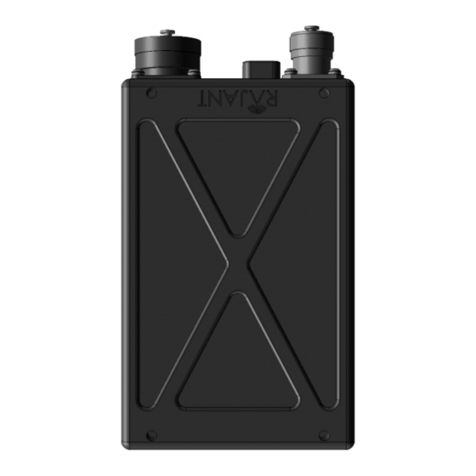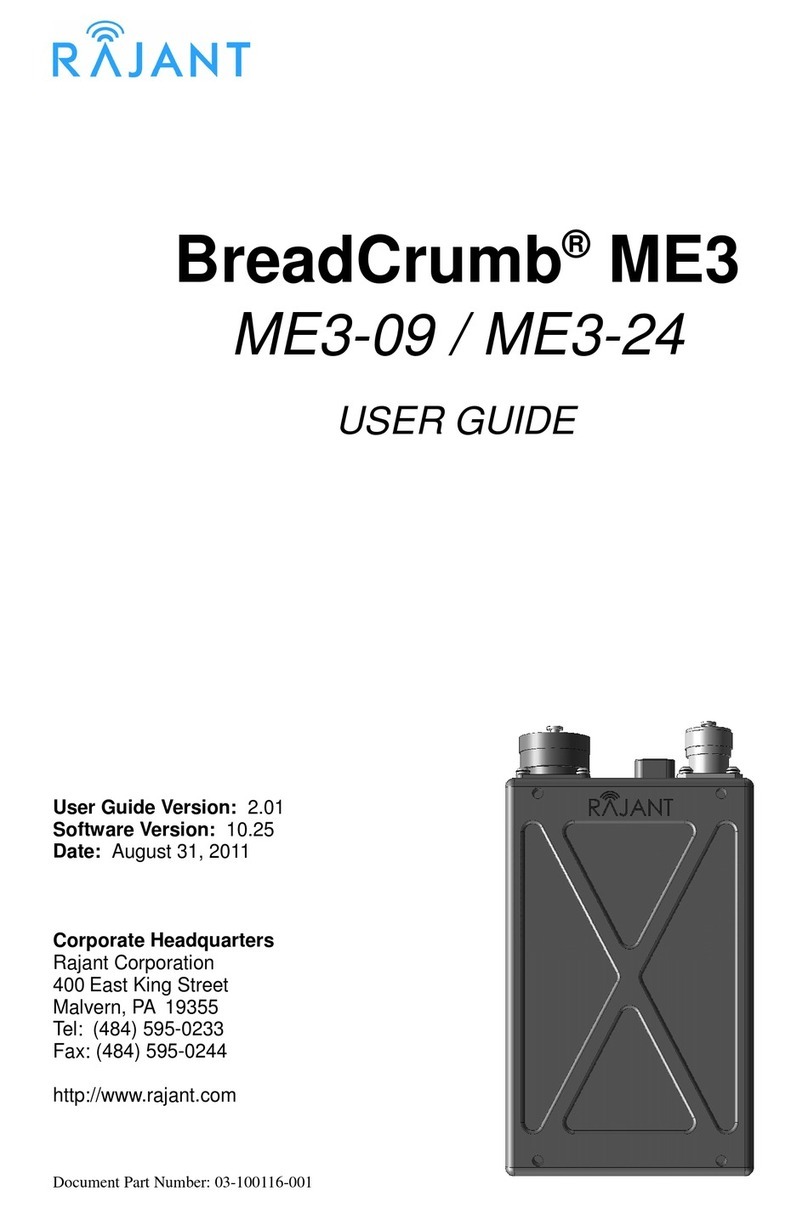Required Antenna Separation
The antennas from any transceiver of the BreadCrumb ES1 may not be co-located with the antennas of
any other transceiver. The co-location restriction is satisfied by maintaining 20 cm separation between
the antennas of different tranceivers. There is no restriction for the separation between the antennas
from the same transceiver, but testing at installation is recommended to verify the system performance
that is achieved with a specific antenna deployment.
Warning
Warning
Because the BreadCrumb ES1 case is plastic, antennas should not be direct attached and should be at-
Because the BreadCrumb ES1 case is plastic, antennas should not be direct attached and should be at-
tached only using antenna cables. This is to avoid stressing the plastic and compromising the IP67 in-
tached only using antenna cables. This is to avoid stressing the plastic and compromising the IP67 in-
gress rating. Low loss cable such as LMR-400 is recommended for externally attached antennas.
gress rating. Low loss cable such as LMR-400 is recommended for externally attached antennas.
Warning
Warning
For all BreadCrumb models, for installations that will experience vibration or shock, all antennas
For all BreadCrumb models, for installations that will experience vibration or shock, all antennas
should be externally mounted and attached using cables. Low loss RF cable such as LMR-400 is recom-
should be externally mounted and attached using cables. Low loss RF cable such as LMR-400 is recom-
mended for cable attached antennas.
mended for cable attached antennas.
Warning
Warning
If a radio port is not required for a given application, the port should be disabled in software using
If a radio port is not required for a given application, the port should be disabled in software using
BC|Commander, and a 50 Ohm terminator should be installed.
BC|Commander, and a 50 Ohm terminator should be installed.
Figure: Incorrect Antenna Placement
IMPORTANT: Exposure to Radio Frequency Radiation
IMPORTANT: Exposure to Radio Frequency Radiation
To satisfy FCC RF exposure requirements a minimum safe distance of 20 cm must be maintained be-
To satisfy FCC RF exposure requirements a minimum safe distance of 20 cm must be maintained be-
tween this device including antennas and all persons while the device is operating.
tween this device including antennas and all persons while the device is operating.
DFS Additional Antenna Separation
DFS Additional Antenna Separation
For 5 GHz transceivers using channels that require DFS radar detection, it is recommended to mount
For 5 GHz transceivers using channels that require DFS radar detection, it is recommended to mount
each antenna for a DFS channel at least 2 feet from any other 5 GHz transceiver’s antenna.
each antenna for a DFS channel at least 2 feet from any other 5 GHz transceiver’s antenna.
Safety
Warning
Warning
The BreadCrumb ES1 is not user serviceable. Repairs must be performed at a Rajant designated service
The BreadCrumb ES1 is not user serviceable. Repairs must be performed at a Rajant designated service
center by trained personnel.
center by trained personnel.
Warning
Warning
To protect the user against the risk of electric shock during high voltage transient events which may oc-
To protect the user against the risk of electric shock during high voltage transient events which may oc-
cur when this equipment is installed outdoors, protective earth grounding of the POE power supply is
cur when this equipment is installed outdoors, protective earth grounding of the POE power supply is
required. Case ground connections are provided on all Rajant supplied POE power supplies. The case
required. Case ground connections are provided on all Rajant supplied POE power supplies. The case





























